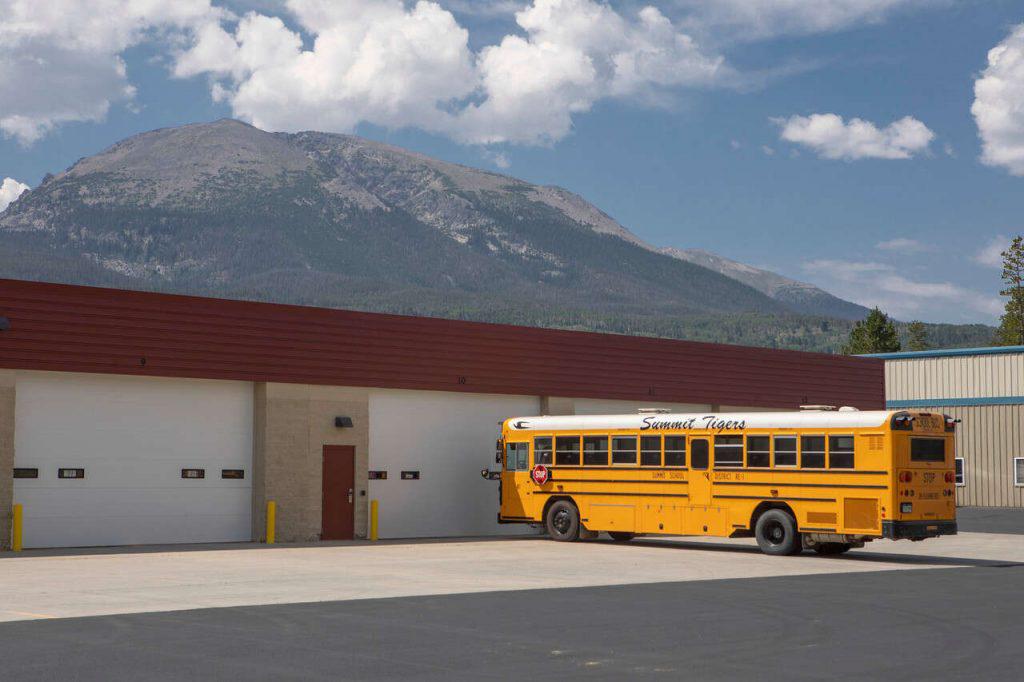If a proposed pay bump doesn’t fix the bus driver shortage, Summit School District will have to pick who gets a ride

Summit School District leaders are pushing for pay increases for bus drivers in their 2023-24 budget, hoping better compensation will fill critical positions that would complicate bus routes next year if left unfilled.
Superintendent Tony Byrd said he’s “very confident” the district’s board of education will vote to increase hourly driver pay by as much as $5, raising it to just over $28. If passed, it would be the second raise for drivers in the past two school years.
“Clearly, getting students to school safely with our transportation is a super high priority for us,” Byrd said. “The assumption we’re making is better pay and more active recruitment will result in more drivers.”
Board members must adopt a budget by June 31, though it can be revised up until Jan. 31, according to district Chief Financial Officer Kara Drake. And pay increases must be balanced amid numerous interests, including drivers, support staff and teachers, who are currently engaged in salary negotiations with district leadership.
Driver shortages have plagued the district for years, with officials struggling to retain staff and bring in new hires. Byrd said it could jeopardize the district’s ability to bolster students’ attendance, which dropped this school year, particularly for high schoolers.
District data shows that more than a third of all students this past year were considered “chronically absent,” meaning they missed more than 10% of the academic year — about 17 to 18 days.
The district needs 22 drivers to be fully staffed. This school year, it had 15. By the end of May, it will be down to 12, according to Transportation Manager Andrea Meyer-Pemble. Many of those drivers are also part time, Meyer-Pemble added.
“We’re working on a skeleton crew,” Meyer-Pemble said. “We have made it work, but it’s been a tough year. But that is not something that we can sustain.”
Drivers navigate 14 high school and middle school routes and 12 elementary routes, each with 49 and 45 bus stops, respectively. Meyer-Pemble said during this year’s spring semester, one afternoon route in Dillon Valley had to be consolidated with another route in Summit Cove due to driver shortages.
If the district cannot shore up staff levels heading into the fall, there could be more route consolidations on the way. Meyer-Pemble said she does not foresee eliminating bus stops, but consolidated routes will lead to further challenges.
“The more students we put on a bus, the more complicated it gets,” Meyer-Pemble said. “It’s really important that we try to keep our routes at a feasible ridership.”
For example, a route that typically sees five bus stops may have to increase to seven. But the capacity of the bus won’t change, meaning the district will have to reduce the number of students at each stop.
To do this, Meyer-Pemble said the district will look at numerous factors to prioritize which students will ride the bus. Factors will include proximity of students from their school, their family’s access to a car, whether the student is receiving services such as free-and-reduced lunch and how the student is performing in school.
Families must register students to receive bus services before the next school year begins. That application will open on June 1 and will allow Meyer-Pemble to determine who should be a priority.
The goal, Meyer-Pemble said, is to ensure the students who most rely on the bus, and who would face barriers without it, are the ones who can ride.
“There’s just only so many kids that we can fit on a bus,” she said, adding that for families who don’t make the cut, she plans to give at least two weeks’ notice before the beginning of the school year.
But Meyer-Pemble is hoping to avoid this scenario altogether.
With more pay and recruiting, she believes the district can increase staffing levels to a point where services won’t be affected. Drivers will need to start applying soon though since it takes about six to eight weeks to train new hires, Meyer-Pemble said.
“We want to ensure that the kids get to school everyday. We want to ensure that they get to school safe and ready to learn. To have that consistency of knowing that that service is available to them is extremely important,” Meyer-Pemble said. “If we can just get these applicants through the door, they will know why we do what we do every day and how rewarding it is.”
Published on SummitDaily.com.
